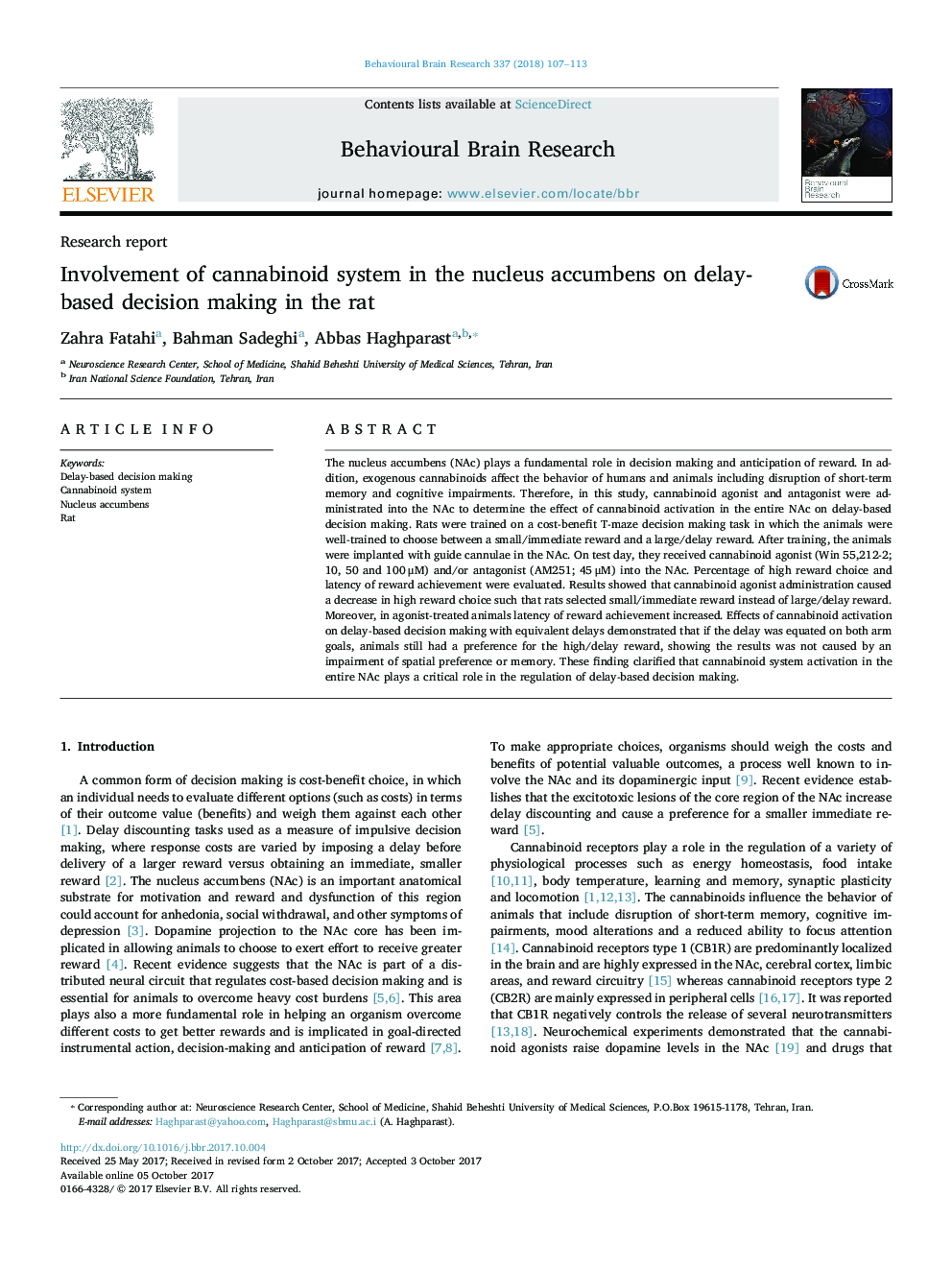| کد مقاله | کد نشریه | سال انتشار | مقاله انگلیسی | نسخه تمام متن |
|---|---|---|---|---|
| 5735259 | 1612898 | 2018 | 7 صفحه PDF | دانلود رایگان |
- Activation of cannabinoid system in the NAc affects delay-based decision making.
- Injection of cannabinoid agonist in the NAc increases latency of reward attainment.
- Manipulation of cannabinoid system in the NAc did not influence locomotor activity
The nucleus accumbens (NAc) plays a fundamental role in decision making and anticipation of reward. In addition, exogenous cannabinoids affect the behavior of humans and animals including disruption of short-term memory and cognitive impairments. Therefore, in this study, cannabinoid agonist and antagonist were administrated into the NAc to determine the effect of cannabinoid activation in the entire NAc on delay-based decision making. Rats were trained on a cost-benefit T-maze decision making task in which the animals were well-trained to choose between a small/immediate reward and a large/delay reward. After training, the animals were implanted with guide cannulae in the NAc. On test day, they received cannabinoid agonist (Win 55,212-2; 10, 50 and 100 μM) and/or antagonist (AM251; 45 μM) into the NAc. Percentage of high reward choice and latency of reward achievement were evaluated. Results showed that cannabinoid agonist administration caused a decrease in high reward choice such that rats selected small/immediate reward instead of large/delay reward. Moreover, in agonist-treated animals latency of reward achievement increased. Effects of cannabinoid activation on delay-based decision making with equivalent delays demonstrated that if the delay was equated on both arm goals, animals still had a preference for the high/delay reward, showing the results was not caused by an impairment of spatial preference or memory. These finding clarified that cannabinoid system activation in the entire NAc plays a critical role in the regulation of delay-based decision making.
Journal: Behavioural Brain Research - Volume 337, 30 January 2018, Pages 107-113
